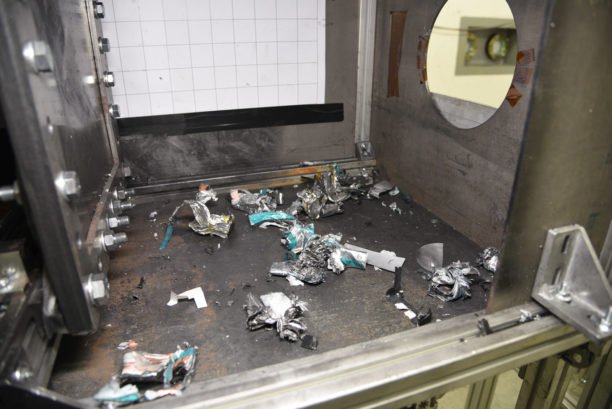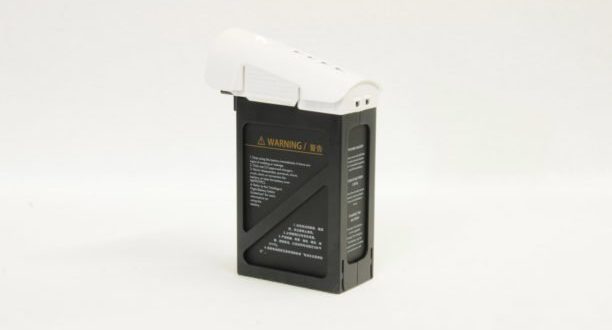The institute has begun to perform initial impact tests with drone batteries and motors. “Using compressed air, we accelerated these two components to speeds ranging from 115 to 255 meters per second and fired them at aluminum plates up to eight millimeters in thickness that were mounted in a test bench,” Dr. Sebastian Schopferer, a scientists working on the project, explains…. “There was substantial deformation and indentation of the plates, and the drone battery and engine were completely destroyed.”
© Fraunhofer EMI
Typical lithium-ion battery (weighing approximately 700 grams), as installed in a drone.

© Fraunhofer EMI
Fragments of a drone battery following impact with an aluminum plate on the test bench.
The following is from a Fraunhofer press release.
The primary objective of this series of tests is to determine the transfer of momentum at the instant of impact with the two aforementioned components and to investigate the associated damage to aircraft materials such as aluminum alloys and fiber composites. In parallel to these dynamic investigations, researchers also conducted a number of quasi-static pressure tests in order to determine the strength and rigidity of the drone components. These results will play an essential role in the derivation of numerically efficient, predictive simulation models that the aviation industry can then use to ascertain new and important findings about the impact behavior of drones. Using such models during the design phase, it will be possible to assess the resistance of new aircraft components to the impact of a drone.
Acceleration tests with complete drones
In order to simulate realistic impact scenarios, researchers are now planning to construct a new type of test bench for investigating the impact of complete drones with a maximum weight of three kilograms and flying at speeds of up to 150 meters per second. “We will be able to investigate the impact and fragmentation of complete drones during collision with both rigid and flexible targets and thereby study the presumably catastrophic effects of a drone strike for an aircraft,” Schopferer explains. “Tests in this weight class of drone have never been carried out before.” The tests will be conducted with a variety of drones, including both amateur and semiprofessional models, weighing between one and three kilograms. In addition to aircraft manufacturers, these investigations will also benefit aviation authorities, providing them with important information for a more in-depth assessment of the danger to aircraft posed by drones.
https://dronelife.com/2019/07/02/team-studies-drone-strikes-on-airplanes-by-firing-them-into-a-wall-at-500-mph/
 Unmanned Aerial Vehicle The latest drone news
Unmanned Aerial Vehicle The latest drone news




